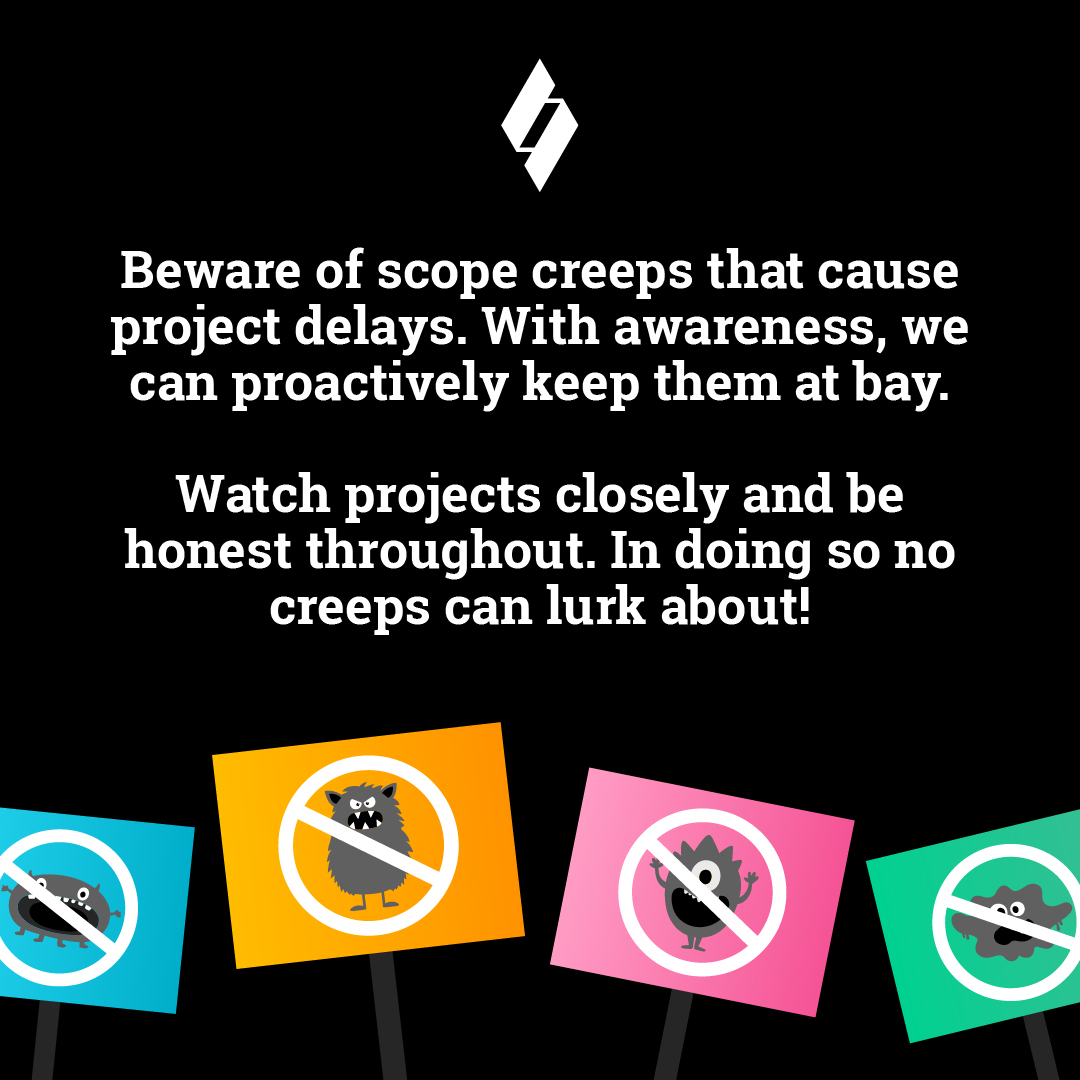How to prevent scope creep when working with an agency
By: Sara Kohan
April 17, 2024 | Reading Time: 7 mins
Projects can take many twists and turns. We’ve been in business for over 15 years and have seen everything creep up on us from province-wide internet outages to our clients’ experiencing re-orgs.
If you’re a project manager who manages agency-vendor projects for your company, you’re likely just as aware of all the ups and downs that can happen. In this blog, we’re diving into the wild world of scope creep and how to keep your projects from spiralling out of control when working with an agency.
What is scope creep?
Scope creep is like a mischievous gremlin that sneaks up on you and adds little sprinkles of chaos that turn your perfectly planned project into an unpredictable adventure. In all seriousness, when something goes out of scope that means it’s going beyond the initially planned agreement, budget, goals, or timelines.
The types of scope creep
With so many variables able to impact a project’s successful delivery, it’s no surprise that there are many kinds of scope creep. While there are no fool-proof ways to control all these variables, being aware of the types of scope creep, red-flags to watch for and how you can be preventative is critical to project management.
Business creep
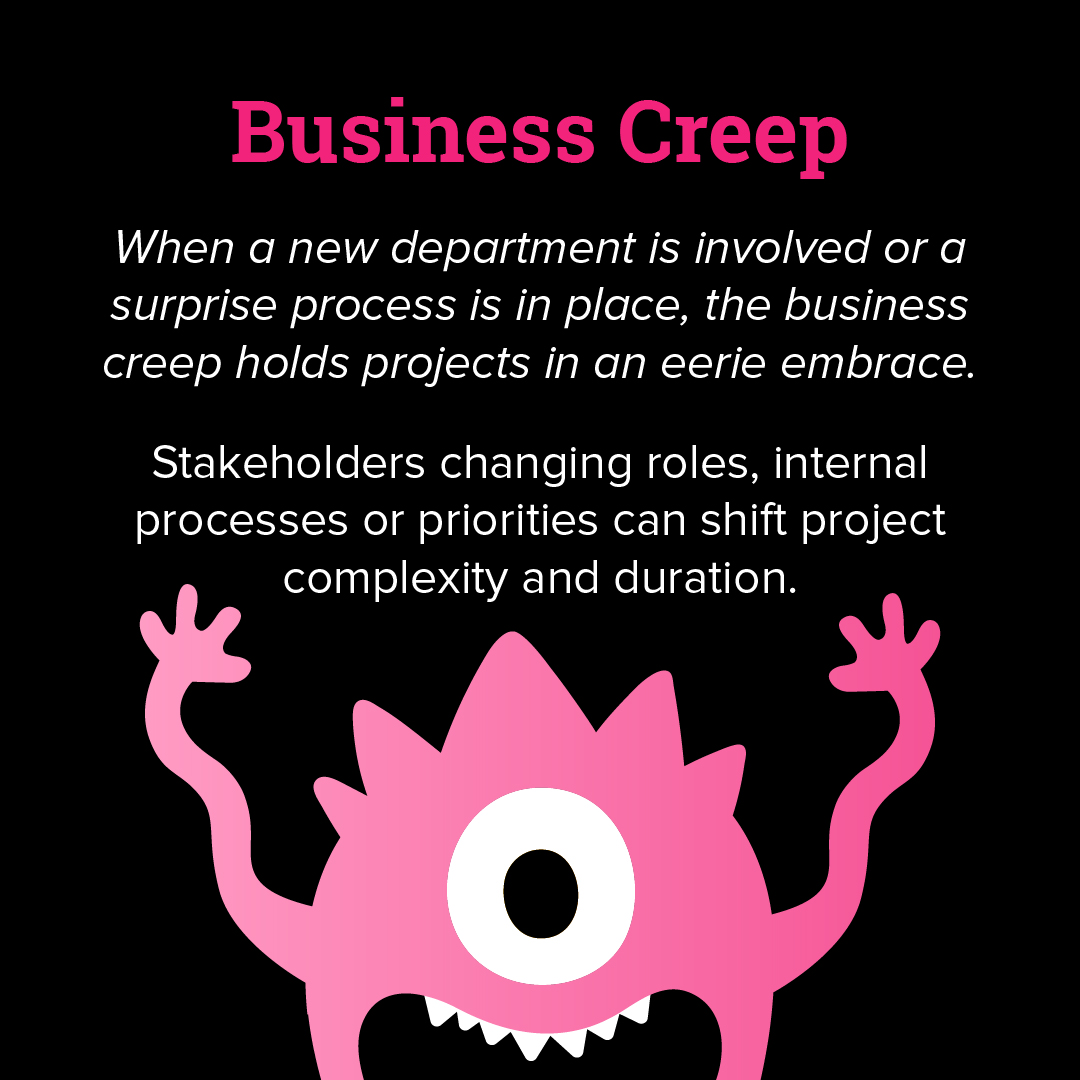
Usually, when decision-makers change or new ones are added, that’s business creep. Anything to do with changes in your internal processes or if your business priorities suddenly shift that can impact project complexity and duration.
We see business creep happen when a new department suddenly becomes involved in the project or key stakeholders on a project leave. Business creep may also occur if a certain process or complexity isn’t accounted for. For example, security clearances, legal approval, IT access or implementation are all possible processes that may be overlooked and often slow down a project.
How to prevent business scope creep
Have RACI and your project team determined
Since your agency doesn’t have visibility into processes or the day-to-day of your business like you do, you’ll have the most insight on helping prevent business creep. We see projects go well when our clients have a dedicated project team clearly defined from the start. This sets the expectations for who needs to be involved and in what capacity so there’s fewer delays in revisions, approvals or buy-in through various project phases.
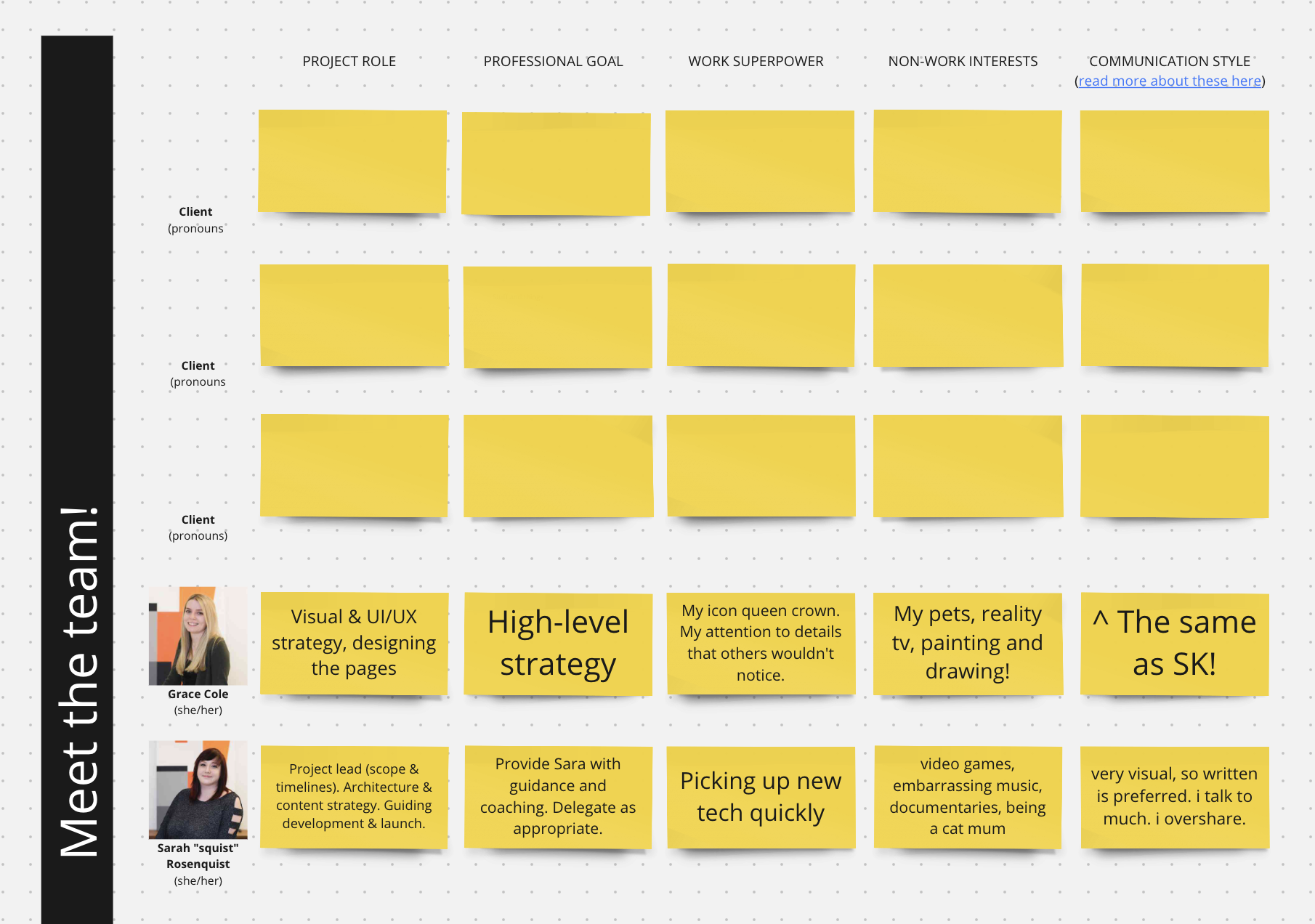
One way to set yourself up for success is doing a RACI matrix exercise before the project begins. This framework helps you define your team’s roles and each person’s level of involvement and engagement.
Responsible – who is responsible for what tasks and aspects of the project?
Accountable – who is accountable for ensuring the project gets completed successfully?
Consulted – who needs to provide feedback or input on the project?
Informed – who needs to be kept in the loop on progress/decisions but ultimately is not a decision maker?
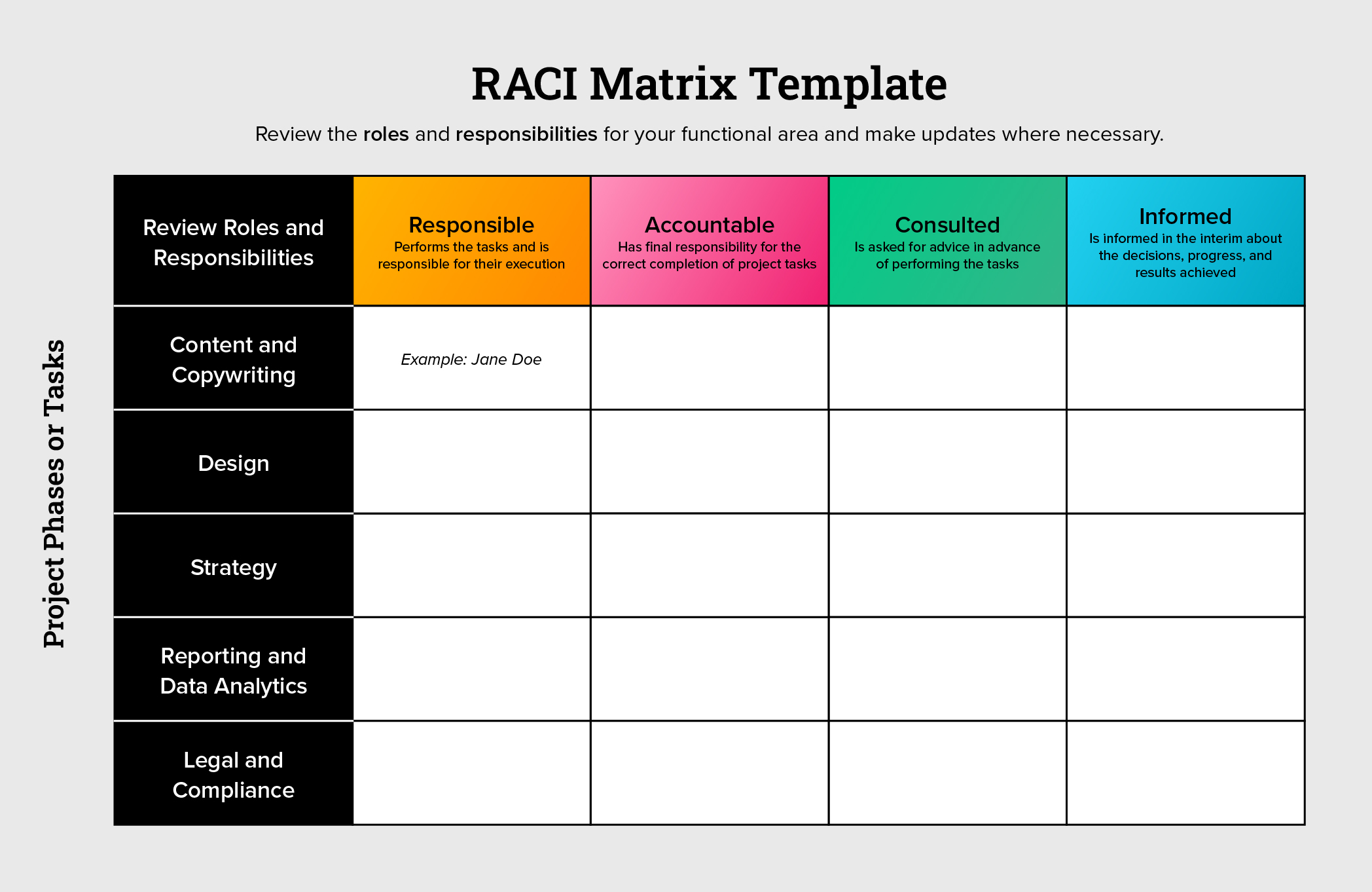
You’ll have the best insights into your teams’ internal processes, the culture of information sharing, and everyone’s communication styles. With expectations and level of involvement from all teams defined, you can be proactive in avoiding business creeps.
Effort creep
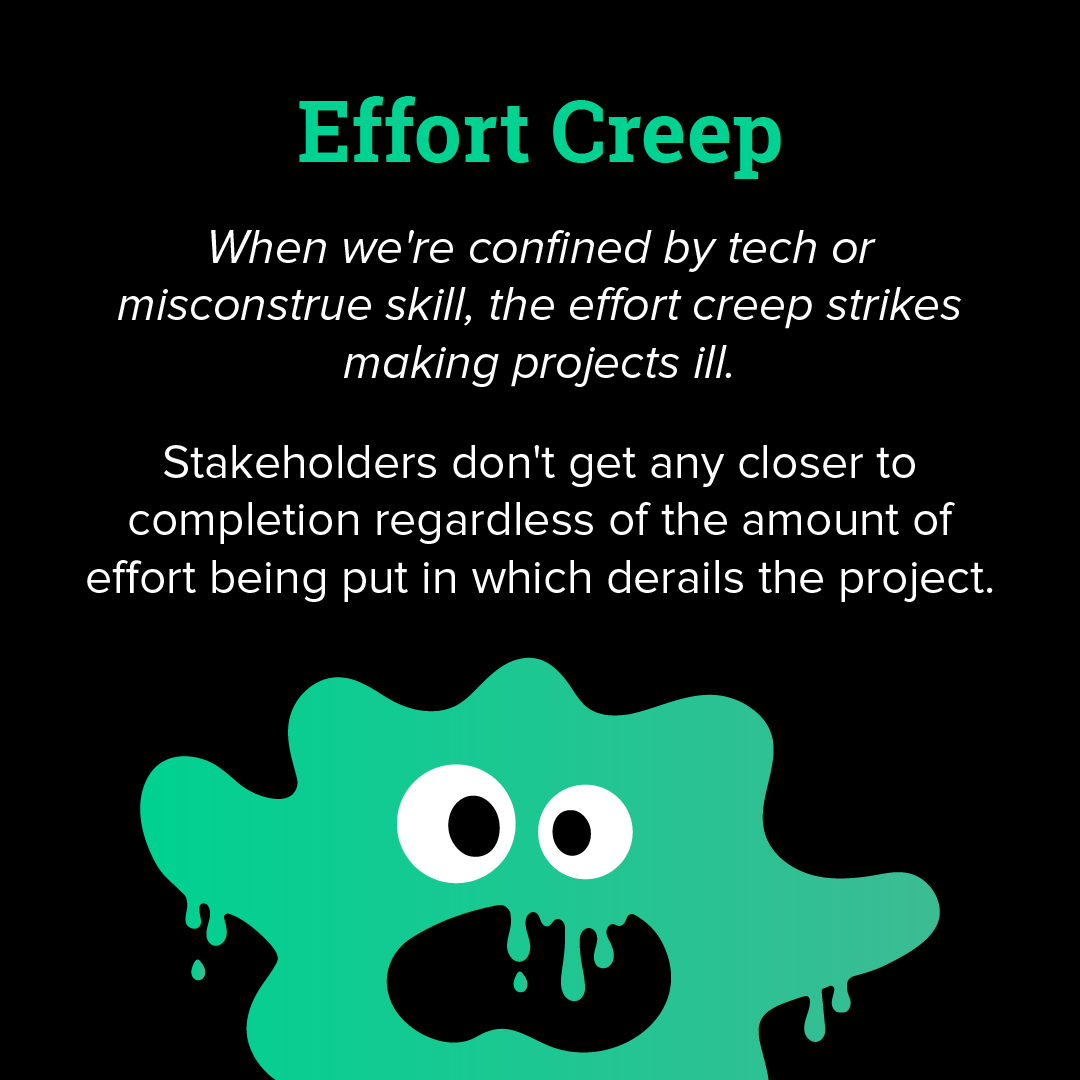
Effort creep is like swimming against a current of thick molasses. No matter how hard you try, you won’t move forward and you’ll end up over-exerting yourself without much to show for it. It’s a sticky situation.
For example, if your team or agency doesn’t have expertise with particular software there’s going to be a big learning curve. Chances are, you will have to move a lot slower and use more resources to push ahead. When we’re confined by technology or misconstrue skill level that can derail a project from getting completed.
How to prevent effort scope creep
Identify skill gaps and expertise alignment early on
When you are vetting an agency, be mindful of expertise, experience, and technology alignment. Having discussions early on to understand skill levels and/or where there are knowledge shortages on your side of the team and the agency’s side can help avoid effort creep.
For example, imagine you are going through a complete website overhaul and don’t have enough resources on your team to write content for the new site. If you don’t have particular skill sets or enough members on your team then that’s a good thing to flag at the start of a project. It can allow your agency to staff your project accordingly so you can get the support you need.
Feature creep
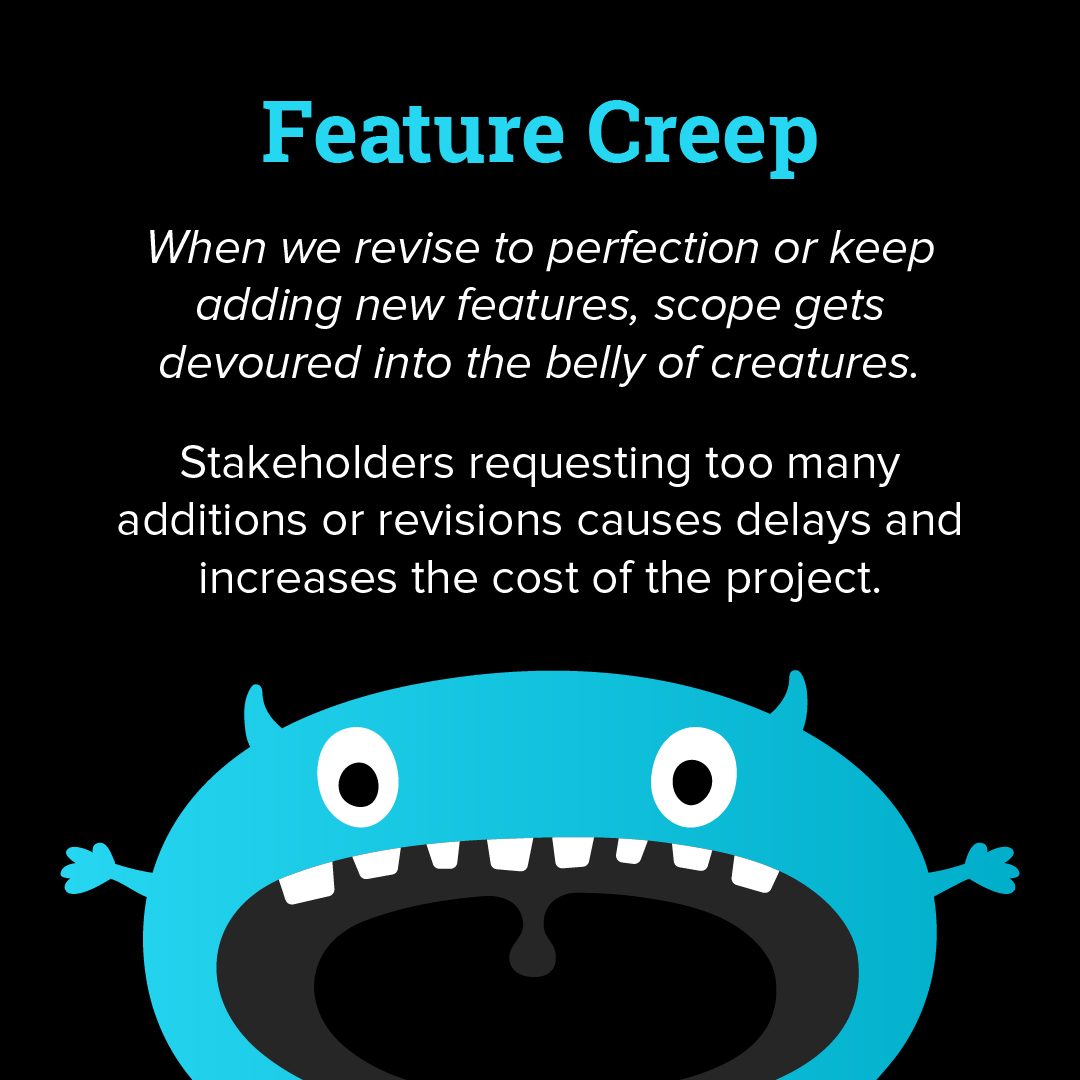
Have you ever gone out to eat and someone at the table was indecisive about their order and kept asking for modifications? Next thing you know, the server is confused, everyone else is held up and what was supposed to be ‘going out to grab a burger’ with your friend is now a deconstructed charcuterie board featuring a beef patty. That’s the idea of feature creep.
When stakeholders request too many additions, new features, or the revision processes get drawn out then that usually causes delays and increases the cost of the project.
How to prevent feature scope creep
Identify what success looks like for the project
Determine what success looks like before you start the project. Distill what you want your end deliverable to be. This helps set expectations from the start and we can define what’s a must have versus a nice to have. Going through this exercise together helps you and your agency easily prioritize as the project goes on so we don’t encounter feature creep. Having RACI figured out relates to this because with a core team set on your side, you can manage any evolving stakeholder demands.
Embrace agile methodologies and MVPS (minimum viable products)
If something can’t fit in now, that doesn’t mean it can’t be prioritized down the line. Digital marketing is an ongoing initiative, and you must be open to iterations. Especially with living breathing dynamic spaces like websites – you can always make optimizations or add features in the future. We find it’s often better to get some version of your work in the market than prolonging any releases in the pursuit of perfection.
Hope creep
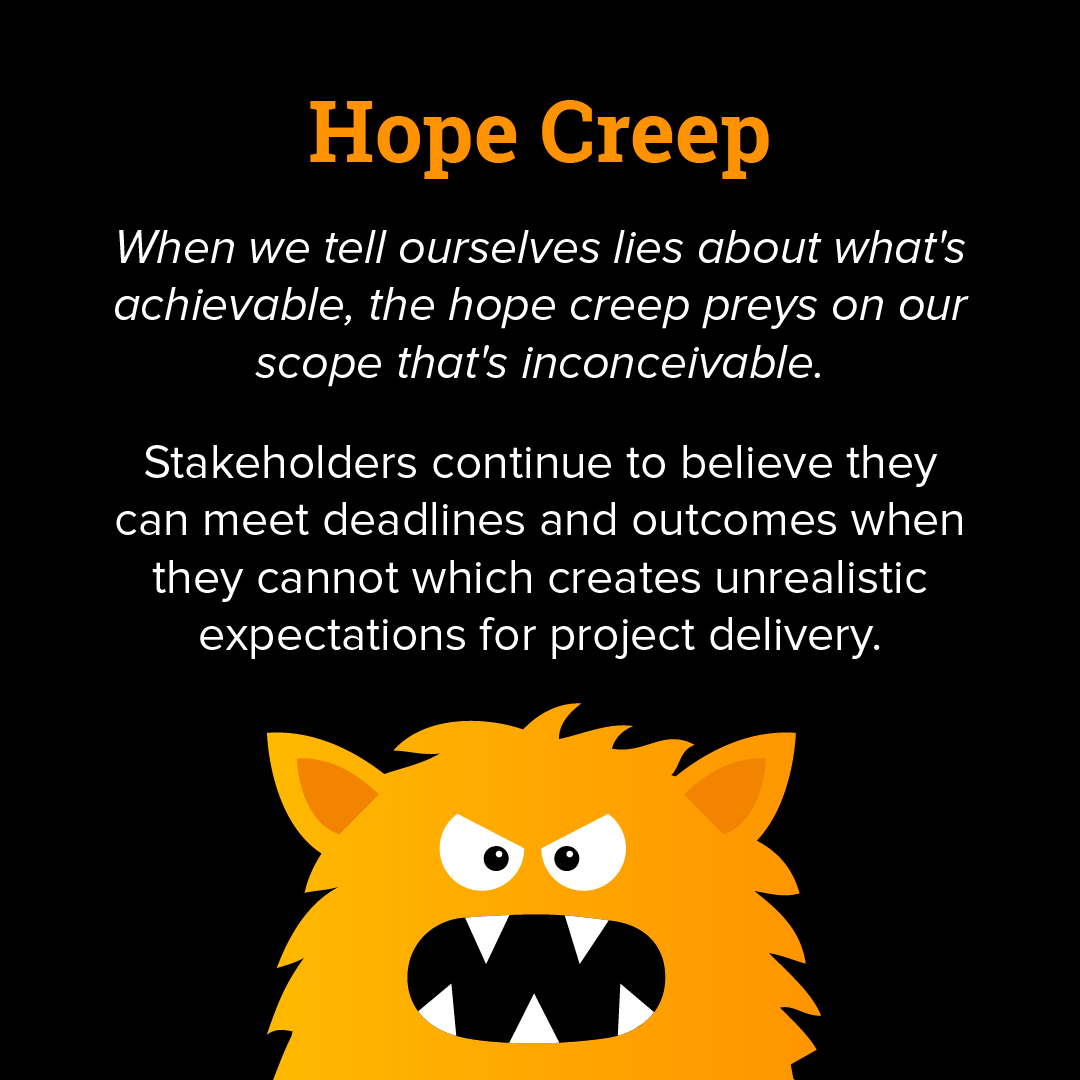
Hope creep occurs when we have unrealistic expectations for outcomes and we hold onto hope that we’re still going to turn things around on time and on budget. Denial is a river in Egypt. Being delulu (delusional) is not the solulu™ (solution). It’s sort of like lying to yourself or your team about what’s possible or, thinking everything is going to be fine.

For example, being overly optimistic about returning to your agency with timely feedback is one example of hope creep. Sometimes, project leads haven’t determined the process for gathering feedback from their team. In this case, it’s possible for there to be internal discussions that cause delays in getting feedback which impact the next phases of the project. Other ways hope creep can show up is not being willing to reassess goals and deliverables as the project goes on but still anticipating meeting the deadline.
How to prevent hope scope creep
Learn about project phases and the general time required for requests
If you aren’t clear about process, ask your agency to explain their processes so you understand how long requests or implementing changes can take. Be inquisitive about complexity because sometimes what appears like a small change can be difficult to implement so understanding the scope of requests and what’s achievable can help mitigate hope creep.
Be transparent with your internal team
Keep your team accountable for providing feedback and any important collateral required to keep the project moving forward. How many stakeholders need involvement? Ask yourself if it’s truly feasible to provide feedback within certain timelines. All of these are important in avoiding hope creep.
Try to foster psychological safety and be transparent about how the project is progressing with your team. Don’t give your internal team false hope (or unrealistic expectations) about what’s achievable. It’s better to be honest and avoid hope creep which can derail the project completely.
Uh oh, we’ve gone out of scope, what now?
Most preventative measures for avoiding scope creep revolve around honest communication and open dialogue. As much as you want to be preventative and in control, projects involve a level of fluidity we all need to flow with because business needs change and projects involve people- and people can be unpredictable. So, as much as you tried, your project has gone out of scope…what now?
There’s no way around it, once a project goes out of scope, there will need to be some level of compromise. You’ll need to:
Learn to move forward with an MVP and prioritize needs under existing constraints
Be open to extending project timelines
Be open to increasing the budget
Make peace with the fact that not everyone is going to be happy
Scope creeps are capable of derailing even the most carefully laid plans. By preemptively addressing potential sources of scope creep, such as business shifts, skill misalignments, and unrealistic expectations, project managers can steer their projects toward success. And when faced with unexpected challenges, embracing adaptability and maintaining a focus on delivering value can help navigate the stormy seas of scope creep. So, to all the project managers out there, remember: With diligence, foresight, and a dash of flexibility, you can conquer scope creep and lead your projects to triumph. Happy managing!
